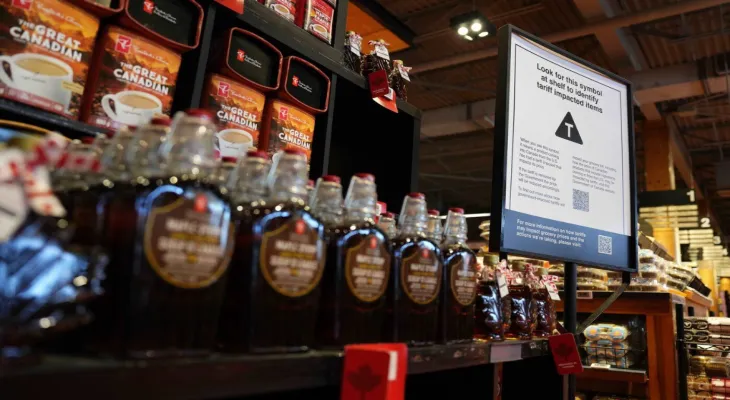Search here
Newspaper
Search here

Arab Canada News
News

Published: May 31, 2025
Toronto | Arab Canada News – Saturday, June 1, 2025
Inflation in food prices continues to rise in Canada, according to the latest data released, putting increasing pressure on Canadian households which are now facing more challenging living costs, especially concerning essential goods.
According to a report published by CP24, food prices recorded a new increase during May, reaching an estimated annual growth average of 6.4%, with a sharp rise in the prices of meats, vegetables, and canned products. Analysts indicate that the continued rise in energy prices and transportation costs, along with disruptions in global supply chains, are all factors contributing to the exacerbation of this trend.
Most Affected Items
The report showed that prices of red meats increased by 8.1% compared to the same period last year, while prices of leafy vegetables jumped by 11%. Dairy products, bread, and grains recorded varying increases, adding to the burdens of consumers.
Economists stated that this food inflation poses an increasing concern, especially for low-income groups, as households are forced to reconsider their purchasing habits and abandon some essential products or seek cheaper alternatives.
Implications for Food Security
In statements to CP24, the director of the Food Research Center at Gulf University, Sylvia Jacobs, confirmed that “food inflation not only impacts store shelves but also threatens the food security of wide segments of society, and increases reliance on food banks.”
Jacobs called on the federal government to intervene through direct support measures for affected families and to re-evaluate tax policies on essential goods.
Consumers Rearranging Their Priorities
Under these circumstances, studies indicate that consumers have become more careful in meal planning, favoring special offers, and reducing their purchases of some expensive fresh products.
This comes at a time when the Bank of Canada is considering future monetary policy options, balancing between containing inflation and avoiding pushing the economy into a technical recession, especially with slowing growth in multiple sectors.
Comments